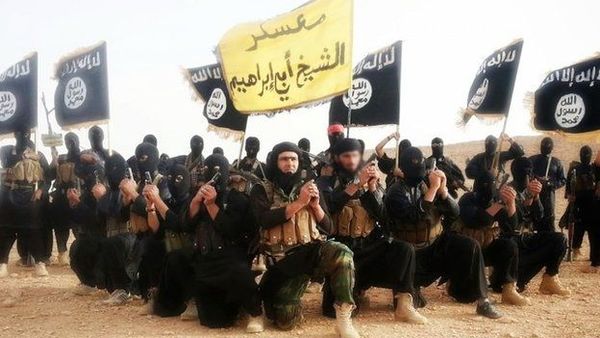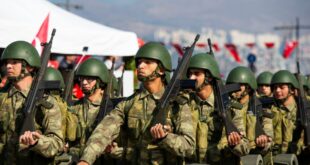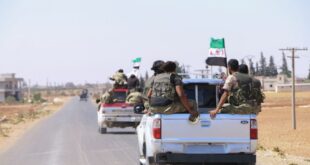The IO campaign highlighted these successes and served as a strong recruiting tool for Daesh, which drew (and continues to draw) recruits from all over the world. Bolstered by dramatic videos of flag-waving militants travelling unmolested in convoys through swathes of the Middle East, Daesh was able to capitalize on their initial momentum with surges in manpower and captured equipment. Their seizure of the Iraqi cities of Mosul and Fallujah in 2014 highlighted their ability to wage protracted warfare along an extensive front. However, as in the case of all offensive warfare, there comes a point when a force reaches its operational limits. Clausewitz called this, “the diminishing force of the attack.”
A Peshmerga fighting position, reminiscent of World War I strong points, outside Sinjar, Iraq (Photo Credit Frederick Paxton/Vice News)
As delineated in On War, Clausewitz outlines the dangers inherent in a prolonged offensive movement: lengthening lines of communication and supply, increased losses, sieges, relaxation of effort, and defection of allies. As Daesh has seized and occupied territory, its lines of supply have lengthened and they require more manpower to hold strategic points. When only opposed by local militias and the Iraqi Army, Daesh were able to establish strong points, static defensive positions, and consolidated supply dumps with relative impunity. The entrance of the U.S. air campaign has served to disrupt these lines of supply and destroy static positions. While this campaign does not have the force to completely stop or drive back Daesh incursions, it has effectively slowed Daesh operations long enough for static fronts to develop; such as around Mosul, where Kurdish Peshmerga fighters face off Daesh militants in elaborate trench networks.
Daesh is now meeting what Clausewitz refers to as friction in war, i.e., those factors that sap the war machine of its vitality. Clausewitz writes, “Action in war is like movement in a resistant element. Just as the simplest and most natural of movements, walking, cannot easily be performed in water, so in war it is difficult for normal efforts to achieve even moderate results.” Friction can be anything from the impacts of weather and terrain to the mundane realities of equipment maintenance (lack of replacement parts, fuel, etc). In its drive to establish an Islamic Caliphate, Daesh reached out far and wide to project its influence, overextending its capabilities in the process. The developing stalemate across its fronts could indicate an operational pause to consolidate, or it could simply mean that it is reaching the “diminishing point of the attack.”
For an organization that sells itself as a dynamic, maneuver-oriented offensive force, Daesh cannot afford to get locked into a defensive war of attrition. Much of their recruitment comes from aggressive military tactics, as well as the brutality that they demonstrate against military and civilian actors alike. The latter can continue unabated while the former lags, but in order to hold the massive area that they have seized, Daesh needs recruits. The coming months will tell if Daesh has lost its momentum; if it has, that could very well impact recruitment. Driving a Toyota Hilux through cowed population centers holds more appeal than sitting in a trench receiving accurate airstrikes and enduring constant artillery bombardment. The Daesh narrative is boosted by their dual headed IO campaign of military prowess and brutal terrorism. The Coalition can put a dent in that narrative by forcing Daesh into a war of static fronts, decreasing the perceived romance of being an IS militant.
 Geostrategic Media Political Commentary, Analysis, Security, Defense
Geostrategic Media Political Commentary, Analysis, Security, Defense





